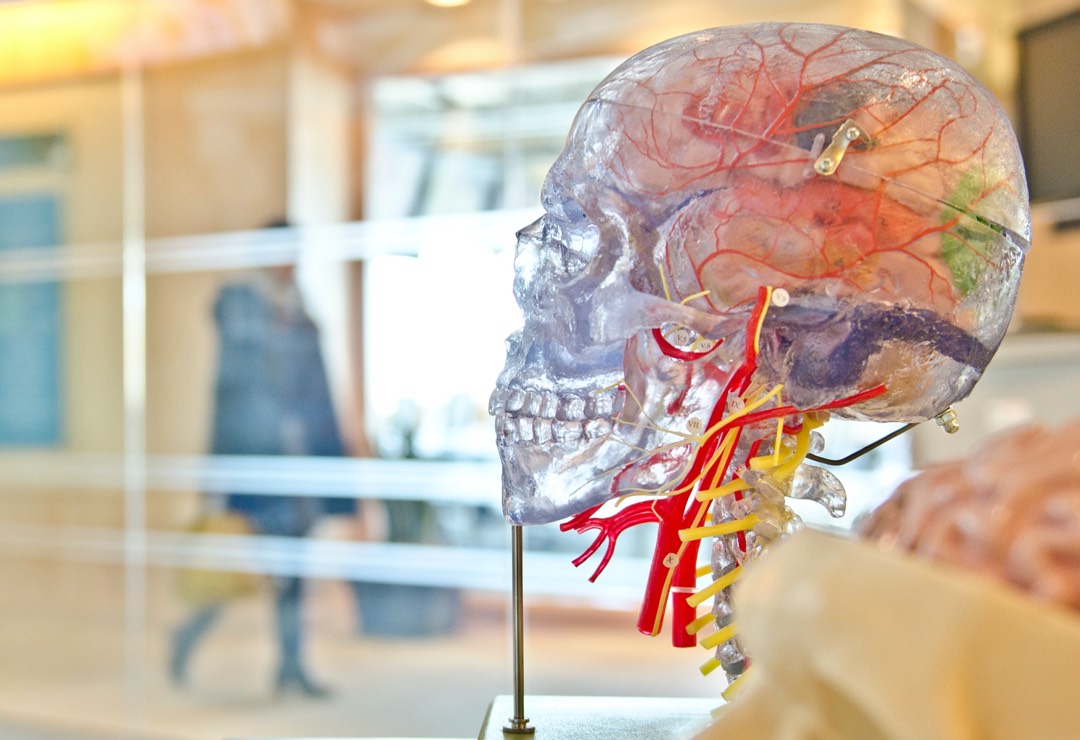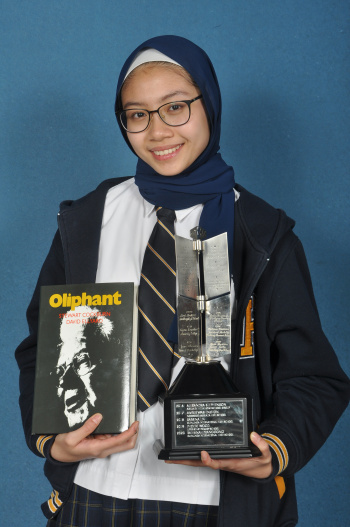
South Australian Science Teachers Association
The creative process for the OSA trophy winning Scientific Inquiry entry for 2020!
Posted by Oliphant Science Awards
on 11/02/2021

By Raihanah Pranggono
My winning project was a scientific inquiry into the effects of disaccharides and monosaccharides on Saccharomyces cerevisiae’s (baker’s yeast) respiration rates. The results indicated that the monosaccharide fructose yielded the highest average concentration of carbon dioxide gas produced and S. cerevisiae respiration rate, followed by disaccharide sucrose, monosaccharide glucose and disaccharide maltose. This experiment suggests that fructose is the most optimal sugar for short-term respiration in this strain of S. cerevisiae.
How I Approached Creating and Starting My Winning Project
I came up with the idea for my project when learning to draw the chemical structures and memorise the corresponding names of different types of disaccharide and monosaccharide isomers in my Chemistry class, as I started to question the real-life significance of drawing such complex structures that appeared to only have minor structural differences. Nevertheless, I realised that these could have significant effects on the chemical reactions in which the sugars are involved, such as respiration. This in turn reminded me of the important real-life applications of S. cerevisiae respiration that I learned in Biology class, in particular, baking bread and producing ethanol, so I decided to further investigate this process through a scientific inquiry.
To develop my project before commencing my experimental trials, I underwent a preliminary brainstorming session of all the aspects that I was necessitated to consider regarding my topic of investigation, like which types of sugars to use as variations of my chosen independent variable, other apparatus I would need, the experimental procedure and how to measure the dependent variable. I ensured that the scope of my research was focused and narrowed down by creating my research goals and methods with efficiency and practicality in mind. Subsequently, I created an experiment plan and proposal and received helpful feedback on it from my Biology teacher and school laboratory assistant, to whom I also asked the questions that surfaced during my early research planning stages. My final experiment plan contained a research question that I created to define my scientific inquiry’s aim; controlled, dependent and independent variables; the apparatus; experimental procedure and a risk assessment.
Resources Utilised
Before I started carrying out my experiment, I also thought that it was crucial for me to spend some time learning about the background scientific knowledge and existing research related to my scientific inquiry’s topic. The resources that I needed to do this were mainly high school biology textbooks and academic journal articles, which could be searched up through search engines like Google Scholar. Furthermore, the sources cited by Wikipedia articles related to my topic of investigation served as a wonderful springboard into more in-depth, profound research done by academicians and/or scientists. I tried to find out about the conclusions, empirical data/results and experimental designs of past academic papers, so that I could possibly address aspects of their research in relation to my own empirical data in the laboratory report of my own scientific inquiry later on. As for background information from textbooks, I acquired a digital copy of an International Baccalaureate Biology Course Companion so that I could find the information relevant to my experiment by simply searching up important keywords.
Basic Skills Used to Complete My Project
- Automatic data collection through Vernier Graphical Analysis – I utilised a Vernier carbon dioxide gas probe to collect my empirical data, which was connected to my laptop through a USB cable and collected and graphed the data automatically on a program called Vernier Graphical Analysis.
- Performing statistical tests by using Microsoft Excel 2019 – I chose to analyse my empirical data by undertaking a one-way ANOVA (Analysis of Variance), which compared the means of the results produced by the four variations of the independent variable by determining whether there is a significant difference between those mean values, or whether two or more of them are equal. Microsoft Excel 2019 is capable of performing several kinds of statistical tests, so I simply searched up how to perform an ANOVA through Microsoft Excel 2019 on Google and followed all the steps to complete my statistical analysis.
Scientific Principles Learnt
By undertaking my investigation, I reinforced my scientific knowledge about the chemical/molecular structures of disaccharides and monosaccharides – monosaccharides are single sugar units that can be linked together through condensation reactions in order to form carbohydrates, while disaccharides comprise two monosaccharides linked together with a glycosidic bond through condensation reactions. These are anabolic reactions that require energy from adenosine triphosphate (ATP), and that involve the loss of a -H group from one monosaccharide and an -OH group from another monosaccharide, forming water as a by-product, along with the disaccharide produced.
Additionally, I managed to obtain a more holistic understanding of respiration itself and how sugars are utilised during the process. For example, during aerobic respiration, S. cerevisiae undergoes the three stages of glycolysis (an anaerobic process), the Krebs cycle and oxidative phosphorylation to convert a sugar such as glucose and oxygen into carbon dioxide and water, while during anaerobic respiration, S. cerevisiae undergoes glycolysis and fermentation to convert a sugar and oxygen into carbon dioxide and ethanol.
One of the things that I enjoyed the most about developing my project was utilising the theoretical scientific concepts that I have learned in class in conjunction with the practical application of the scientific method in investigating a topic that I was passionate about. In fact, this is what I love most about science – it possesses challenging and stimulating opportunities that necessitate a holistic balance between academic study and the acquisition of investigational and practical skills, all while satisfying your curiosity in the process! After all, as Einstein once said, the important thing is to never stop questioning.
| Setup of the experiment | Positioning of the Vernier carbon dioxide gas probe inside the experimental bottle |
 |
 |
You can view all the 2020 Scientific Inquiry winning entries here.
Archive
- May 2024
- April 2024
- March 2024
- February 2024
- December 2023
- November 2023
- October 2023
- September 2023
- August 2023
- July 2023
- June 2023
- May 2023
- April 2023
- March 2023
- February 2023
- January 2023
- December 2022
- November 2022
- October 2022
- September 2022
- August 2022
- July 2022
- June 2022
- May 2022
- April 2022
- March 2022
- February 2022
- January 2022
- December 2021
- November 2021
- October 2021
- September 2021
- August 2021
- July 2021
- June 2021
- May 2021
- April 2021
- March 2021
- February 2021
- January 2021
- December 2020
- November 2020
- October 2020
- September 2020
- August 2020
- July 2020
- June 2020
- May 2020
- April 2020
- October 2018
- September 2018
- August 2018
- July 2018
